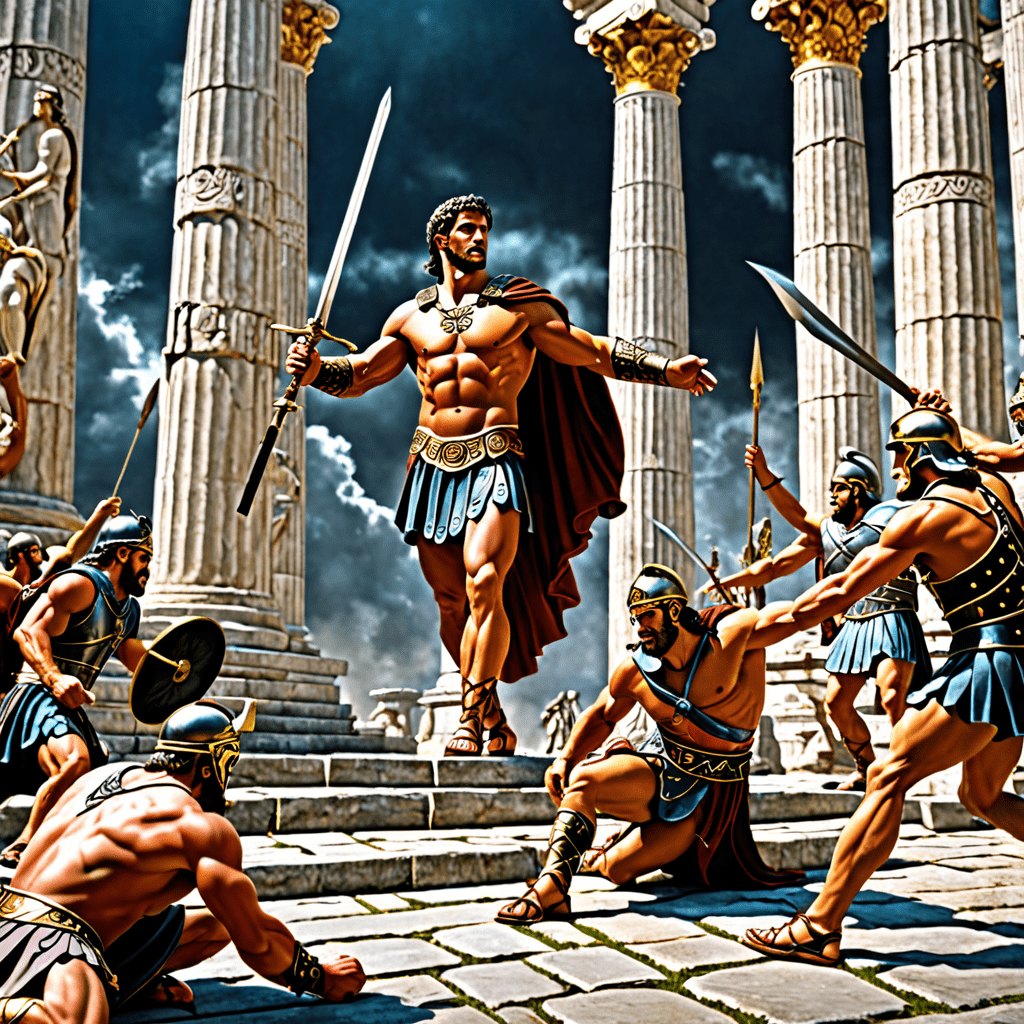The Role of Religion in Aztec Civilization
The Aztec civilization, which flourished in central Mexico from the 14th to the 16th century, was deeply intertwined with religion. Belief in gods and the practice of rituals permeated every aspect of Aztec life, from daily routines to major events. The Aztecs saw themselves as living in a world governed by divine forces and believed that maintaining a harmonious relationship with these deities was essential for their well-being.
The Aztec pantheon consisted of numerous gods and goddesses, each representing different aspects of the natural world, human emotions, and societal roles. These deities were depicted in various forms and were associated with specific elements like the sun, moon, rain, corn, and warfare. They were believed to possess immense power and could both reward and punish humans based on their actions.
The Divine Connection: The Purpose of Aztec Temples
Aztec temples served as the physical embodiment of the relationship between the human world and the divine realm. They were seen as sacred spaces where humans could connect with the gods and seek their favor. Each temple was dedicated to a specific deity, and the structure itself was designed to reflect the god's attributes and personality.
The temple's location was carefully chosen, often on high ground or within a prominent location within the city. This placement was symbolic, signifying the temple's position as a bridge between the earthly realm and the celestial sphere.
Pyramids as Sacred Platforms
The Aztecs constructed impressive pyramid-shaped structures as the foundations for their temples. These pyramids were more than just architectural feats; they were symbolic representations of the cosmos and the Aztec worldview. The pyramid's structure mirrored the belief that the universe was structured in layers, with the heavens at the top and the underworld at the bottom.
The pyramid's layered construction also symbolized the cyclical nature of time and the constant renewal of life. Each level represented a different stage in the journey of the sun god, Tonatiuh, as he traversed the sky. The act of ascending the pyramid's steps was seen as a symbolic journey towards the divine, mirroring the path to spiritual enlightenment.
The Rituals of the Temple: Connecting with the Gods
Aztec temples were the epicenter of religious rituals aimed at maintaining cosmic order and appeasing the gods. These rituals were complex and involved a variety of practices, including:
- Sacrifices: The most significant ritual was human sacrifice, which the Aztecs believed was necessary to nourish the sun god and sustain life itself. The hearts and blood of sacrificed individuals were offered to the gods, symbolizing the life force that sustained the cosmos.
- Offerings: Besides human sacrifices, the Aztecs also offered food, incense, and precious objects to the gods as a way of seeking their favor and expressing gratitude.
- Prayers: The Aztecs prayed to the gods for protection, guidance, and prosperity. These prayers were often accompanied by songs, dances, and elaborate ceremonies.
The Importance of Sacrifice in Aztec Mythology
The act of sacrifice held a profound significance in Aztec mythology and was deeply ingrained in their worldview. The Aztecs believed that the sun god, Tonatiuh, needed to be constantly fed with blood to maintain his strength and continue his daily journey across the sky. Without the sun, life would cease to exist, and the world would plunge into darkness.
The Aztecs also believed that sacrifice was a way of ensuring the balance and harmony of the cosmos. By offering a portion of their own life force to the gods, they believed they were paying their dues and ensuring the continuation of the world's existence. However, this belief in sacrifice was a controversial aspect of Aztec culture and often misunderstood.
The Pyramid of the Sun: A Monument to the Creator God
The Pyramid of the Sun, located in the ancient city of Teotihuacan, is one of the most impressive and significant structures in Mesoamerica. This massive pyramid, dedicated to the sun god, Tonatiuh, was a central element in the Aztec calendar and religious practices. Constructed over centuries, the pyramid stands as a testament to the Aztecs' architectural prowess and their profound belief in the sun's life-giving power.
The Pyramid of the Sun's construction is a marvel of engineering. It was built in stages, with each layer representing a different period in the sun god's journey across the sky. The pyramid's steps symbolise the ascent of the sun god from the underworld to the heavens each morning.
The annual cycle of the sun god was deeply ingrained in Aztec life. The Pyramid of the Sun served as a focal point for religious ceremonies and rituals, especially during the summer solstice. This was a crucial time for the Aztecs, as the sun god's power was at its peak. Rituals performed on the pyramid included offerings of food, incense, and, tragically, human sacrifices. The Aztecs believed these acts were necessary to sustain the sun god's strength and ensure the continuation of life.
The Pyramid of the Moon: A Symbol of Fertility and Rebirth
Standing opposite the Pyramid of the Sun is the Pyramid of the Moon. This pyramid, dedicated to the moon goddess Coyolxauhqui, is a testament to the Aztecs' reverence for the lunar cycles and their association with fertility and rebirth.
Coyolxauhqui was a powerful and complex figure in Aztec mythology. She represented the moon's influence over the tides, the growth of crops, and the cycle of life and death. The Pyramid of the Moon served as a place of worship for the moon goddess and a reminder of her vital role in the natural order, a reminder of the constant renewal that life offers.
The Aztec calendar was intricately connected to both the sun and moon. The moon goddess's influence was seen as a complementary force to the sun god's dominance. The intertwining of these celestial bodies was believed to create a balance and harmony that sustained the world.
Theories on the Purpose of Temples and Pyramids
Beyond their religious significance, Aztec temples and pyramids may have served additional functions. One theory suggests that they were used for astronomical observation. The precise alignment of the pyramids and their placement within the city indicate a possible connection to the study of the stars and celestial events.
The evidence suggests that Aztec priests were skilled astronomers, using their observations to predict seasons, track eclipses, and understand the movements of the planets. The placement of temples and pyramids could have aided these observations, making them powerful tools for understanding the cosmos.
Another theory posits that temples and pyramids were centers of both religious and political power. Their imposing presence symbolized the strength of the Aztec empire and the authority of its leaders. The act of constructing these massive structures was a demonstration of power and resourcefulness, projecting the Aztecs' influence throughout their vast empire.
The Legacy of Aztec Temples and Pyramids
Today, the ruins of Aztec temples and pyramids stand as enduring testaments to a civilization that left an indelible mark on history. These structures continue to fascinate and inspire us, providing insights into the ancient world's belief systems, artistic expressions, and architectural achievements.
The study of Aztec religion and culture reveals a complex and sophisticated understanding of the natural world and the forces that govern it. Their reverence for the cosmos and their belief in the interconnectedness of all living things offer valuable lessons for understanding the world we live in today.
FAQ
What was the purpose of the Aztec temples?
The Aztec temples served as physical connections between the human and divine realms, functioning as places of worship, sacrifice, and communication with the gods.
How were the Aztec pyramids constructed?
The Aztec pyramids were built in stages, with each layer representing a different period in the journey of the sun god. These layered structures mirrored the Aztec belief in the cyclical nature of time and the constant renewal of life.
What is the significance of the Pyramid of the Sun and the Pyramid of the Moon?
The Pyramid of the Sun was dedicated to the sun god, Tonatiuh, and served as a center for religious ceremonies and rituals. The Pyramid of the Moon, dedicated to the moon goddess Coyolxauhqui, represented the lunar cycles and their connection to fertility and rebirth.
Why did the Aztecs practice human sacrifice?
The Aztecs believed that human sacrifice was necessary to nourish the sun god and sustain life itself. The heart and blood of sacrificed individuals were considered to be the life force that sustained the cosmos.
What is the modern-day understanding of Aztec temples and pyramids?
Modern scholars view Aztec temples and pyramids as powerful symbols of ancient beliefs, artistry, and architectural skill. These structures provide valuable insights into the Aztec worldview and their unique understanding of the cosmos.



